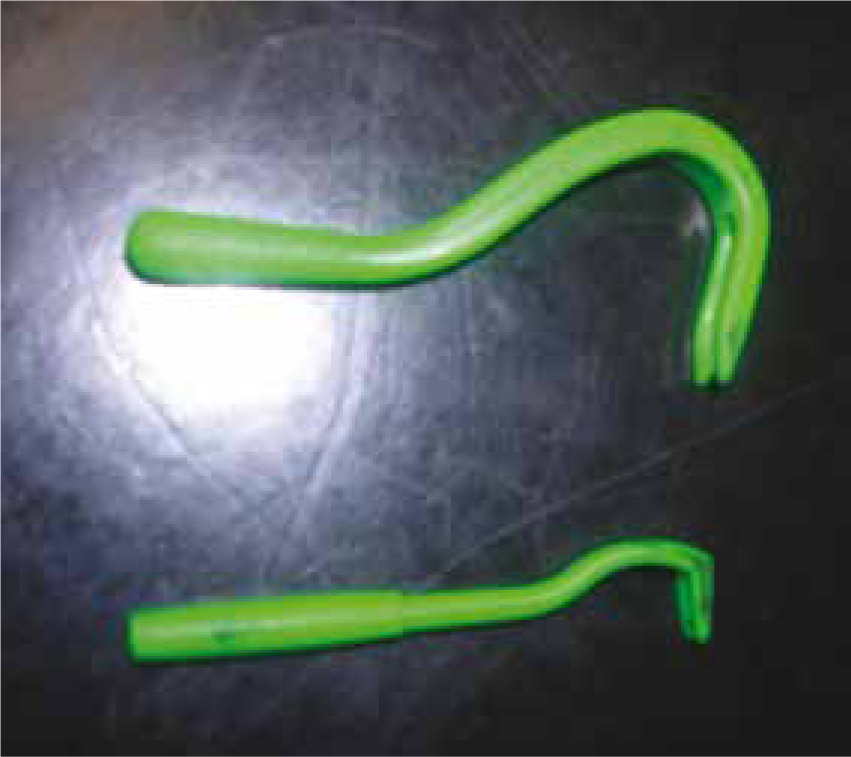The primary tick borne pathogen in UK dogs is Borrelia burgdorferi, the cause of Lyme disease (Smith et al, 2012). While there are some UK diseases with zoonotic potential that remain unrecognised by the public, there are some that have gained recognition through cases in the media, internet forums and word of mouth. Lyme disease fits very much into the latter category and veterinary professionals are likely to face increasing numbers of enquiries regarding the risk that Lyme disease poses, both to dogs and their owners.
The incidence of reported disease in the UK human population is increasing, but it is unclear whether there is any similar increase in the incidence of canine disease. Certainly, there is increasing opportunity for dogs to be exposed to infection. Ixodes spp. ticks which carry Borrelia spp. are endemic in the UK and have a seasonal peak in numbers in spring and autumn months. While these peaks still occur, ticks are now commonly seen all year round in most parts of the UK (Smith et al, 2011) providing potential exposure of dogs to the parasite throughout the year. This has led to the risk of a dog encountering an infected tick in the UK being approximately 1 in 200 over each tick season (Smith et al, 2012). Therefore, there is a need for veterinary professionals to give accurate advice to clients who are at particular risk to enable them to keep themselves and their pets safe. The veterinary nurse plays a vital role in this regard as part of the practice team, both in clinics and at reception.
This article provides a review and update on the epidemiology, diagnosis, clinical signs, treatment and prevention of Lyme disease as well as the role of nurses in delivering practical advice to the public.
Epidemiology — life cycle and distribution
Lyme disease was first identified as a distinct medical condition in the town of Lyme in Connecticut, USA, from where it gains its name. Lyme disease is now recognised as a widespread disease in humans and dogs throughout temperate regions of the Northern hemisphere (Bennett, 1995). It is caused by spirochete bacteria of the Borrelia burgdorferi complex and is transmitted by Ixodes spp. ticks (Figure 1). Although it can occur in a wide variety of mammals, canines and humans seem particularly susceptible to the disease, where other animals commonly kept as pets are relatively resistant. The sheep tick Ixodes ricinus is the most important vector throughout Europe, but Ixodes hexagonus and Ixodes canisuga are also significant UK vectors.

Where Lyme disease is endemic it is maintained by reservoir hosts that act as subclinical carriers of infection and reproductive hosts that do not carry infection but maintain populations of infected ticks. Small rodents and birds are the most significant reservoir hosts, but deer are also important reproductive hosts, carrying Lyme disease rapidly to previously uninfected parts of the country. An example of this is Roe deer that have enabled rapid spread of infection through the Wye valley and into Wales (Böhm et al, 2007).
Ticks mostly become infected as larvae and then remain infected as nymphs and adults. When ticks feed, Borrelia spp. multiply in the gut and over a period of several days, penetrate the gut epithelium, migrate to the salivary glands and then can be potentially delivered to a new mammalian host. As a result a tick has to feed for at least several hours and often 24–48 hours before transmission occurs. Nymphs are thought to be the most significant stage in terms of overall transmission. This is because they are more abundant and due to their size, less likely to be groomed off by pets. They are also easily missed by owners when checking their pets and themselves for ticks.
The current incidence of Lyme disease and prevalence of Borrelia spp. in dogs is unknown, but the distribution and prevalence of ticks infesting domestic dogs has recently been examined (Smith et al, 2011). The prevalence of B. burgdorferi in these ticks was also established (Smith et al, 2012). 173 veterinary practices were recruited to monitor tick attachment to dogs between March and October 2009. A total of 3534 dogs were examined and 810 dogs were found to be carrying at least one tick. I. ricinus was identified in 72.1% cases, I. hexagonus in 21.7% and I. canisuga in 5.6%. The estimated incidence of tick attachment was 0.013 per day in March (lowest) and 0.096 per day in June (highest).
The prevalence of B. burgdorferi was examined in 739 of the ticks collected using polymerase chain reaction (PCR). 2.3% of the ticks tested were positive giving an overall prevalence of infected ticks on all dogs of 0.5%. This suggests that the prevalence of Borrelia spp. in the UK tick population is considerably higher than previous estimates indicate. How this translates into transmission to dogs and subsequent disease remains unknown, but the high risk of exposure to infection means that dogs walking in rural areas or that regularly pick up ticks should be considered at significant risk.
Epidemiology — Lyme disease in the human UK population
The reported incidence of Lyme disease in people is increasing. There were 0.5 cases per 100 000 people in England and Wales in 2001. This had risen to 1.73 cases per 100 000 in 2011. In 2010 there were 953 reported cases in England and Wales, but with considerable under reporting likely, the number of cases was probably nearer to 3000 (Health Protection Agency, 2011). The growing number of reported cases is likely to be a combination of a genuine increase in disease transmission, heightened awareness among the general public and increased surveillance. Increased interest in rural recreational activities and increases in wild host reservoir and tick numbers may also be driving the spread. The arrival of infected migrants to the UK from Eastern Europe, where the incidence of Lyme disease is higher, has also been suggested as a factor (O'Connell et al, 1998). There is no significant direct risk of transmission from dogs to people, and no correlation has been found between dog ownership and risk of infection (Goosens et al, 2001). People can therefore be reassured they are at little or no risk if their pet has Lyme disease or is carrying infection, but they may be exposed to the same infection from ticks where they are walking their pet.
Clinical signs
Most infections with B. burgdorferi are subclinical with 5–10% of infected dogs going on to develop clinical signs. When Lyme disease does develop, this is often due to reinfection with an incubation period of 2–5 months (Wlodarek et al, 2013). Dogs present primarily with acute or sub-acute arthritis in one or more joints with associated lameness, joint swelling and heat. Other acute signs may then follow including fever, anorexia, lethargy and lymphadenopathy. The acute form may be transient with relapses often occurring. Human clinical cases often first present with a circular skin rash known as erythema migrans, but this is rarely seen in dogs. Chronic disease is also a common feature of human infection, but less commonly seen in canines. When it does occur in dogs it tends to occur when acute cases have not been treated or signs missed. Chronic disease consists of a non-erosive polyarthritis and glomerular nephritis rarely progressing to kidney and heart failure. Seizures and behavioural changes may also occur, but are uncommon (Dambach et al, 1997).
Diagnosis
None of the clinical signs associated with Lyme disease in dogs are pathognomonic, but it should be considered as a differential in any dogs presenting with relevant clinical signs. Previous exposure to ticks should also raise suspicion, but the long incubation period may mean that tick exposure is not recorded or forgotten by the client. There are a number of diagnostic tests available to investigate suspected Lyme disease:
Results must be interpreted in the light of clinical signs and other ongoing conditions when deciding if positive results of diagnostic tests indicate active clinical disease, previous exposure or current subclinical infection. A definitive diagnosis can be difficult so starting treatment is justified where diagnostic test results, clinical history and clinical signs support Lyme disease as a diagnosis. Early treatment intervention will greatly improve prognosis if Lyme disease, and owners may be reluctant to perform expensive or invasive tests.
Treatment
Early intervention with antibiotics is effective in reducing the level of infection and improving signs of arthritis. Doxycycline at 10 mg/kg per os once daily remains the mainstay of treatment, although amoxicillin may be used as an alternative in pets where doxycycline is prohibited, such as in those with a hypersensitivity to tetracyclines, vomiting due to concurrent disease, or dysphagia. Treatment should be continued for at least 4 weeks to minimise the chances of relapse. Supportive treatment such as angiotensin-converting enzyme (ACE) inhibitors may be required for secondary complications such as glomerulonephritis and cardiac disease.
Prevention of disease
The many different ways that Lyme disease can present, with varying degrees of severity, means that cases can easily be misdiagnosed or initially overlooked by owners. This makes promoting awareness and prevention of the disease vital in dogs and owners whose lifestyle may put them at increased risk. This includes those who spend time walking in rural areas or pasture, especially areas likely to have large numbers of ticks such as farmland or deer inhabited woodland. Nurses have a particular role to play in flea check clinics and discussions at reception in ascertaining if a pet's lifestyle warrants increased Lyme disease prophylaxis. The prevention of Lyme disease exposure in dogs is a three stranded approach.

| Product | Ingredients | Duration of action | Mode of administration |
|---|---|---|---|
| Activyl Tick Plus | Indoxocarb/permethrin | 1 month | Spot on repellent |
| Advantix | Imidacloprid/permethrin | 1 month | Spot on repellent |
| Seresto | Imidacloprid/flumethrin | 8 months | Collar repellent |
| Cartifect | Fipronil/amitraz | 1 month | Spot on expellant |
| Scalibor | Deltamethrim | 5 months | Collar repellent |
| Vectra 3d | Dinotefuran/Permethrin/Pyriproxyfen | 1 month | Spot on repellent |
| Bravecto | Fluralaner | 3 months | Rapid kill |
| Nexguard | Afoxolaner | 1 month | Rapid kill |
| Frontect | Fipronil/permethrin | 1 month | Spot on repellent |
Whether chemical prophylaxis and vaccination are justified in any individual case depends on the level of exposure and this depends on time spent walking in areas with ticks carrying Borrelia spp., the density of ticks in those areas and the prevalence of B.burgdorferi in those ticks. These factors may be approximated from clinical records and local knowledge, but where not all of these factors are known then a subjective judgement must be made. Other factors such as compliance and the level of concern displayed about Lyme disease by the owner should also be taken into account when making a judgement and clients may be more willing to divulge valuable information to nurses in clinics and reception than directly to a veterinary surgeon. Nurses may also pick up clinical signs early at consults such as flea, geriatric and weight clinics and refer them on to a veterinary surgeon.
Zoonotic risk comes from exposure of people to infected tick bites. Avoiding land with high tick densities and highly endemic areas for B.burgdorferi is the most effective way of minimising risk. Unfortunately, these are also some of the most popular walking and outdoor recreational destinations in the country. Sensible precautions when travelling in these areas include wearing long sleeves and ensuring the lower body is covered, the use of repellent sprays on the body or clothing, and careful inspections for ticks after periods spent outdoors. Local councils will often put up signs in high risk areas giving some or all of this advice (Figure 3). It is well within the scope of veterinary professionals to mention these precautions to clients if their pets have a history of frequent tick exposure, Lyme disease or if their lifestyle puts them at particular risk.

Conclusions
Lyme disease remains a significant threat to dogs and owners exposed to ticks. Although early treatment can often carry a favourable prognosis, diagnosis is difficult and clinical signs can be easily missed or misinterpreted. Prevention is therefore desirable in those pets and owners at highest risk and nurses remain in the front line of assessing patients' tick and disease control needs, giving practical control advice and early detection of disease.

